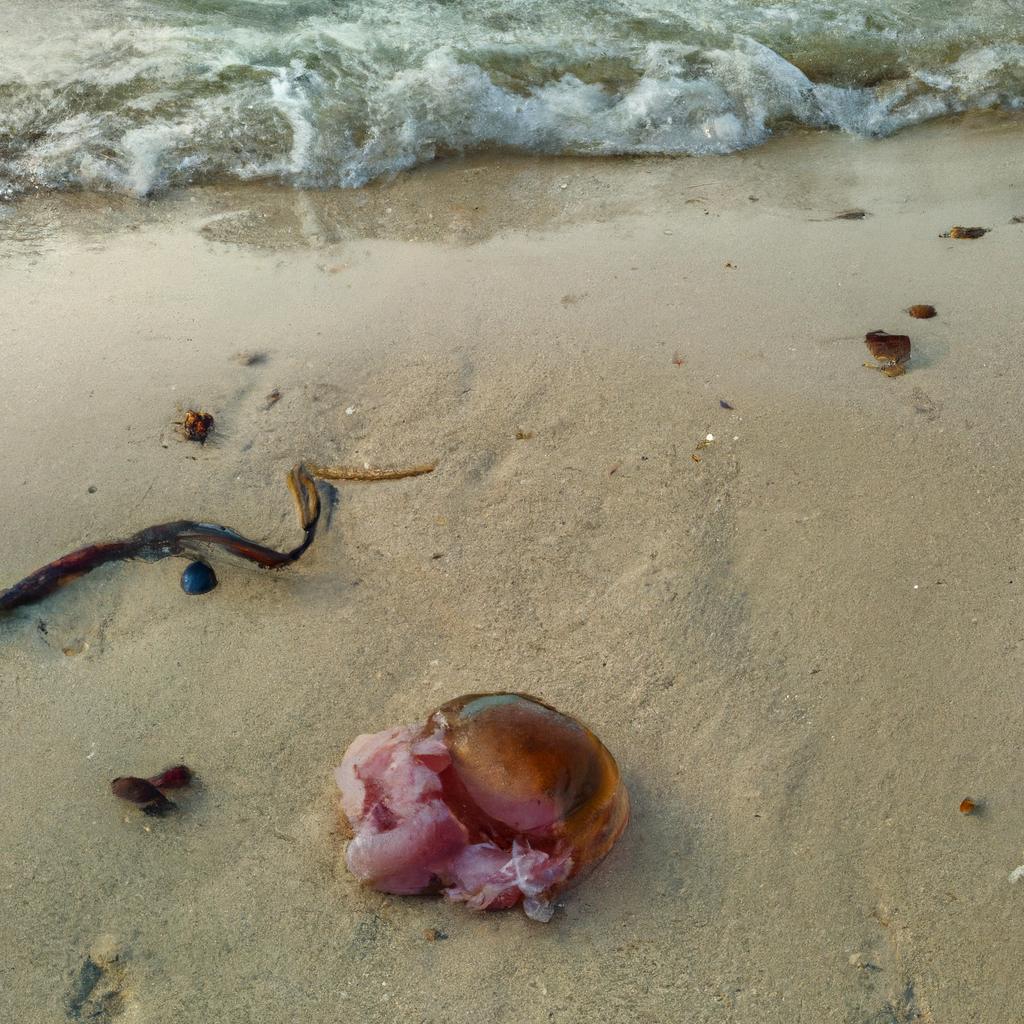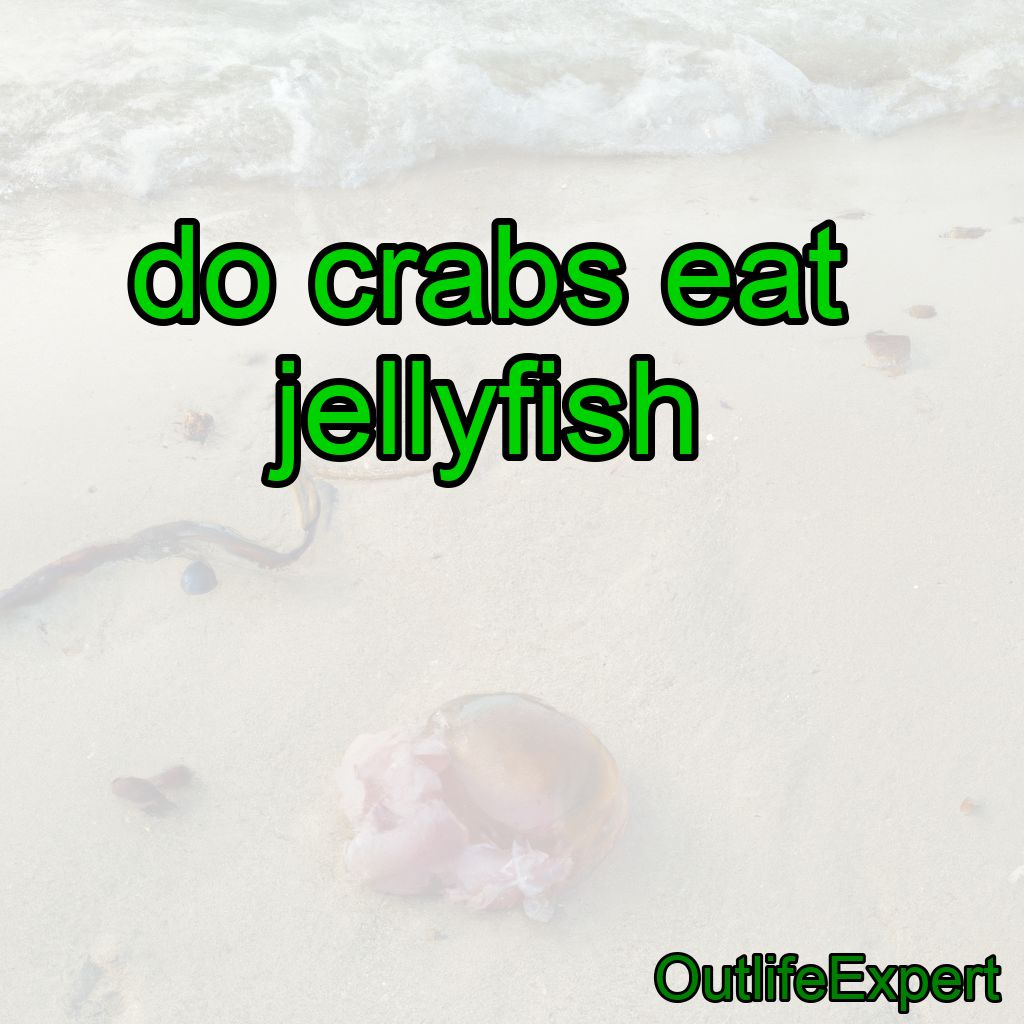As a marine enthusiast and a frequent visitor to the beach, I often find myself fascinated by the curious behavior and unique relationships between different sea creatures. One such relationship that has caught my attention is that between crabs and jellyfish.Do crabs eat jellyfish?
Yes, some species of crabs are known to eat jellyfish. In this blog post, we’ll dive deep into the world of crabs and jellyfish, exploring when, how, and why crabs eat jellyfish, as well as the different species of crabs that are known for this unusual diet.
Contents
The Crab and Jellyfish Relationship
Crabs are known for their opportunistic feeding habits, which means they will eat almost anything they come across in their environment.
While crabs typically prefer to consume algae, plankton, mollusks, and small fish, they are not above feasting on jellyfish when the opportunity arises.
In fact, some species of crabs have developed unique adaptations to help them feed on these gelatinous creatures.
When Do Crabs Eat Jellyfish?
Crabs are more likely to eat jellyfish when food sources are scarce or when they come across an injured or dead jellyfish.
The availability of jellyfish as a food source can be seasonal, as some species of jellyfish are more abundant during certain times of the year.
Personally, I’ve noticed an increase in crab and jellyfish encounters during my beach visits in the late summer and early fall, which could be attributed to the seasonal migration of jellyfish in the area.
How Do Crabs Eat Jellyfish?
Crabs have a unique way of consuming jellyfish, which can be quite fascinating to observe.
They use their powerful claws to tear apart the jellyfish’s soft, gelatinous body and then consume the pieces.
Although jellyfish are known for their stinging cells, some crabs are either immune to the stings or have developed strategies to avoid being stung while feeding.

Green Crab and the Compass Jellyfish
One such fascinating example is the green crab (Carcinus maenas), which has been observed feeding on compass jellyfish (Chrysaora hysoscella).
The green crab will approach the jellyfish from behind, avoiding the stinging tentacles, and then use its claws to tear off pieces of the jellyfish’s bell.
This allows the crab to consume the jellyfish without being stung.
How Often Do Crabs Eat Jellyfish?
The frequency at which crabs eat jellyfish depends on the availability of jellyfish and other food sources in their environment. As opportunistic feeders, crabs will consume jellyfish when other food sources are limited or when they come across an easy meal.
In some cases, this could mean that crabs eat jellyfish only occasionally, while in other instances, it could be a more regular part of their diet.
Why Do Crabs Eat Jellyfish?
Crabs eat jellyfish because they are an available food source that provides essential nutrients. Jellyfish are composed primarily of water, but they also contain protein, which is an important nutrient for crabs.
The consumption of jellyfish by crabs could also help to regulate jellyfish populations, preventing them from becoming too abundant and causing harm to other marine species.
Other Crab Species Known to Eat Jellyfish
In addition to the green crab, there are several other species of crabs known to eat jellyfish.
Decorator Crabs
Decorator crabs (superfamily Majoidea) are known to camouflage themselves by attaching pieces of jellyfish and other marine organisms to their bodies.
While this behavior is primarily for protection, decorator crabs have been observed consuming the jellyfish they use for camouflage when other food sources are scarce.
Arctic Lyre Crab
The Arctic lyre crab (Hyas coarctatus) is another species known to eat jellyfish.
This crab is native to the Arctic and North Atlantic oceans, where it feeds on a variety of prey, including jellyfish, sea anemones, and other invertebrates.
The Role of Crabs in the Marine Ecosystem
Crabs play an important role in the marine ecosystem as both predators and prey. By consuming jellyfish and other organisms, crabs help to regulate populations and maintain the delicate balance of the ecosystem.
Additionally, crabs serve as a food source for numerous marine species, including fish, sea birds, and even other crabs.
Conclusion
In conclusion, yes, some species of crabs do eat jellyfish. While crabs are opportunistic feeders and may not consume jellyfish as a primary food source, they will eat them when other food sources are scarce or when they come across an easy meal.
Crabs play a crucial role in the marine ecosystem, and their consumption of jellyfish can help to regulate jellyfish populations and maintain the balance of the ecosystem. So, the next time you’re at the beach or exploring a tide pool, keep an eye out for these fascinating creatures and their unique feeding habits!
FAQs
What else eats a jellyfish?
Some animals that eat jellyfish include sea turtles, sunfish, some species of fish, and certain types of birds.
What will crabs eat?
Crabs are omnivores and will eat a variety of foods including algae, plankton, small fish, mollusks, and even other crabs.
Do crabs live in jellyfish?
No, crabs do not live in jellyfish.
Do jellyfish run from predators?
No, jellyfish do not have the ability to run or swim away from predators. They rely on their stinging tentacles to defend themselves from potential threats.
Can jellyfish sense predators?
Yes, jellyfish can sense predators through their sensory organs, including their tentacles and statocysts, which detect vibrations and changes in water pressure. They can also detect chemical cues in the water, such as those released by injured or predatory prey.




